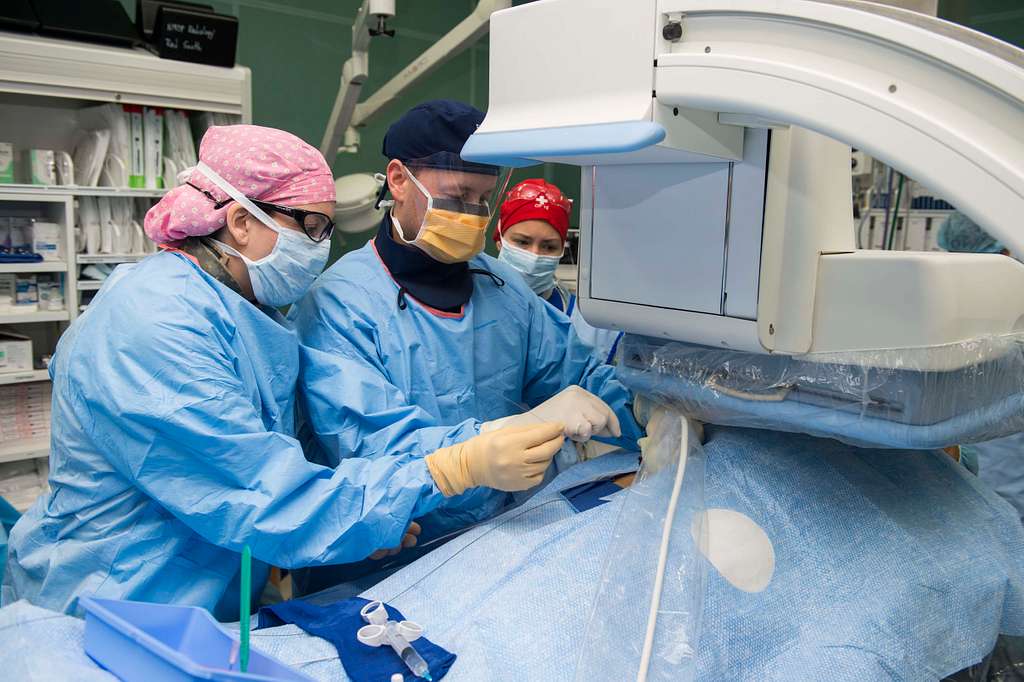The Interventional Radiology (IR) Residency program at Indiana University School of Medicine is a large, multi-hospital tertiary care academic program committed to training elite clinicians specialized in diagnostic, vascular and interventional radiology. The residency is composed of 18 dedicated interventional radiologists with two adjunct Richard L. Roudebush VA Medical Center faculty. Residents rotate through dedicated outpatient interventional radiology clinics throughout their training. Innovative educational initiatives and opportunities to work with world-class faculty researchers are cornerstones of this comprehensive training program.
Residency in Indianapolis
The IU School of Medicine Integrated diagnostic radiology/ interventional radiology and independent interventional radiology residency programs participate in the National Residency Matching Program (NRMP), utilizing the Electronic Residency Application Service (ERAS).
Evolution of Interventional Radiology Training
Following the creation of the primary interventional radiology (IR) certificate by the American Board of Medical Specialties (ABMS), the ACGME approved the interventional radiology residency training program at IU School of Medicine in 2014. The residency offers a unique clinical specialty given its domain of practice as well as distinctive competency, training in imaging, procedural intervention and patient care. The integrated and independent residency training pathways replace the fellowship.Quick Facts
There are a number of excellent internships in Indiana:
- Transitional Internships at IU Health Ball Memorial Hospital, IU Health Methodist and St. Vincent Hospital
- Surgery Internship at IU School of Medicine
- Internal Medicine Internships at IU School of Medicine and St. Vincent Hospital
All residents must maintain basic life support (BLS) and advanced cardiovascular life support (ACLS) certification. IU School of Medicine provides support for this process.
Applicants must be a graduate of an LCME-accredited US or Canadian medical school. Graduates of international medical schools – be in compliance with Educational Commission for Foreign Medical Graduates (ECFMG) requirements for post-graduate training in the US. The program will consider allopathic and osteopathic trainees, as well as international graduates.
Integrated diagnostic radiology/ interventional radiology applicants are required to have completed an interventional radiology clerkship or dedicated interventional radiology elective during medical training.
Applicants must be a US citizen or permanent resident, or eligible for a J-1 visa. The institution does not sponsor H-1 Visas.


.jpg?rev=bb1e9dfc2c964ef4a2045b9af21cc615&la=en&h=3648&w=5292&hash=93F38F40F217C600B92C8C9B5C708EDC)

